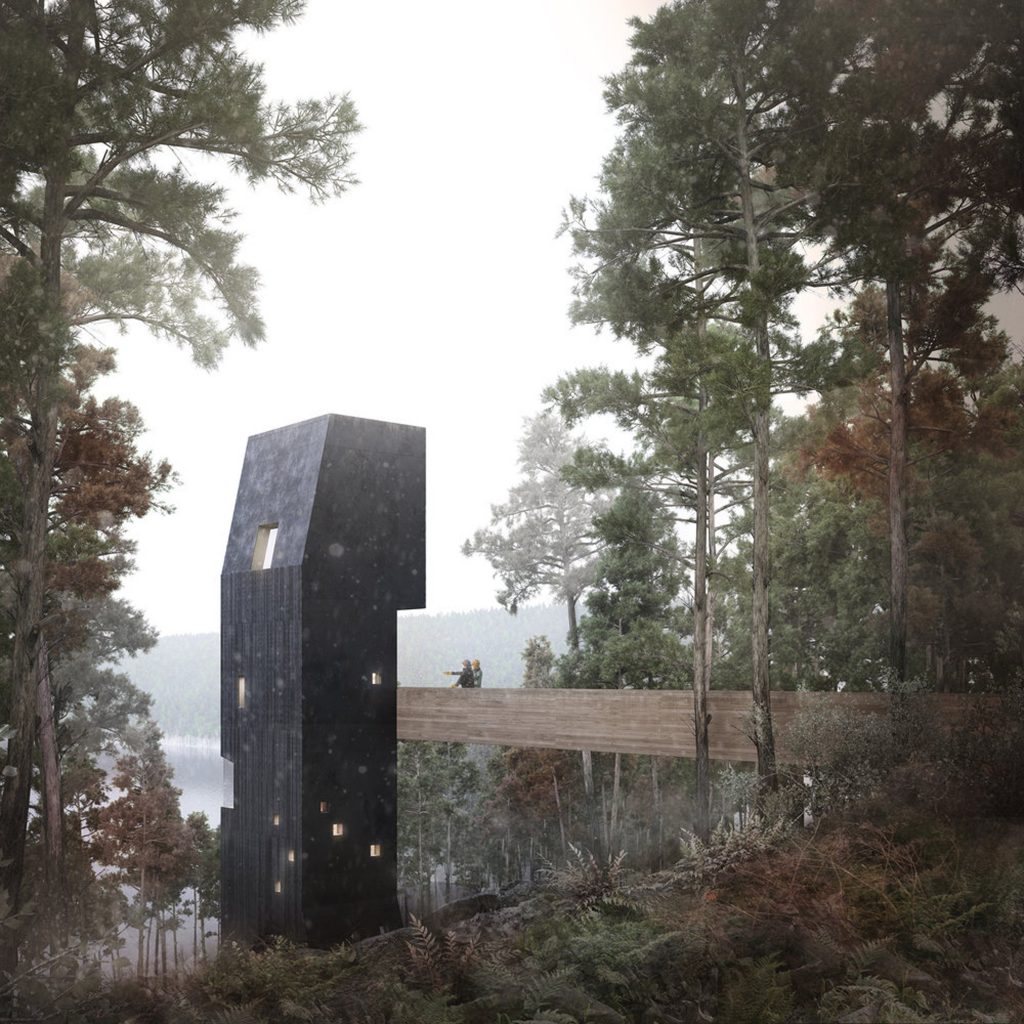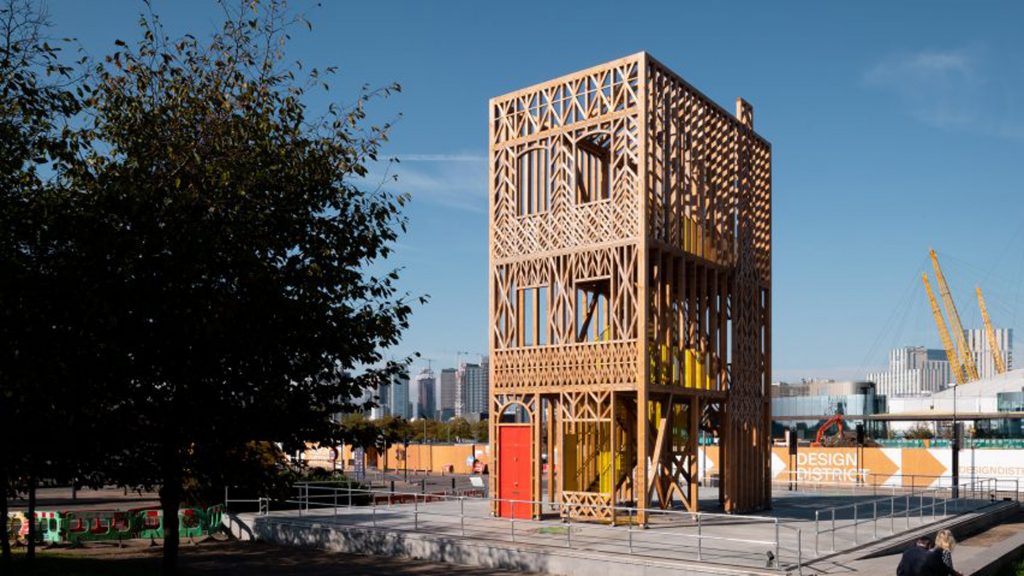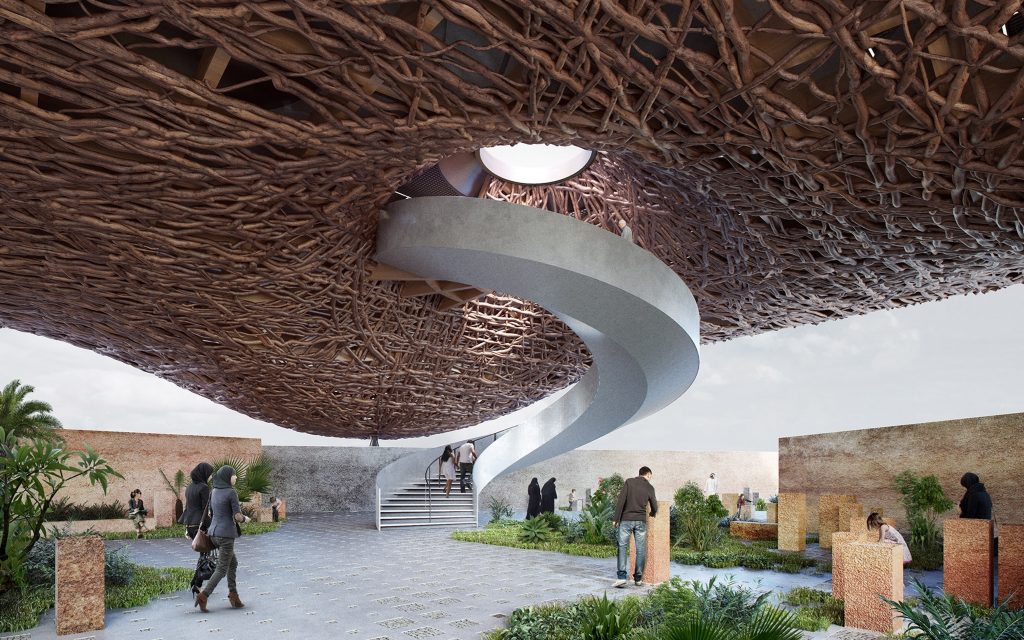Denizen Works is a London and Glasgow based studio that takes its name from a plant naturalised on foreign soil. With projects scattered across the UK and beyond, it takes inspiration from local history, landscape, microclimate, and community.

Garden Tower by Denizen Works
One of its latest projects is located in Inverewe Garden, a botanical garden sitting just to the north of Poolewe in Scotland. Created in 1862 by Osgood Mackenzie, the Garden covers some 20 hectares and is world renowned for its collection of trees, plants and flowers. Denizen Works has been commissioned by the National Trust for Scotland, which has run the Garden since the 1950s, to design an observation tower to attract more visitors. It combines the rich artistic heritage of the Garden with nesting forms of local wildlife, resulting in proposals for a vertical gallery and bird hide to function as a landmark and orientation point, while encouraging more visitors to visit the far reaches of the Garden. The material to be used for the tower is based on the idea of a sliced tree trunk, with rough and smooth faces.

33 Timber House, Photo: Jim Stephenson
If you’re living in or visiting London then take a look at 33 — a three-storey decorative folly, taking its design cues from those of traditional Victorian and Edwardian terrace houses overlooking new development In Central Park on the Greenwich Peninsula. It is the creation of Studio Weave, in collaboration with HATO and illustrator Jay Cover, featuring a structure of delicate timber studwork, galvanized steel and a powder-coated staircase in vibrant yellow. On the second level the floor is finished in epoxy paint stencilled graphics that symbolise the flat room settings within the ‘home’. The folly celebrates Greenwich Peninsula’s gradual transformation from industrial lands on the fringes of the capital to a vibrant residential and leisure hub.

The Gathering Pavilion by Francis Kéré Architects
The Gathering Pavilion for the Tippet Rise Art Center in Fishtail, Montana to the north of the world famous Yellowstone Park, has been designed by Francis Kéré as a quiet, protective shelter for the visitors of the ranch. Located in a slightly sunken landform between the main facilities of the centre and the beginning of the hiking tracks, the pavilion rises in a clearing surrounded by peaceful aspen trees, facing a small creek where water comes down from the mountains.

Brazilian Pavilion Expo 2020 by Gabriel Kozlowski
The Gabriel Kozlowski pavilion is inspired by one of the greatest technological achievements of Brazil — the improvement of the Direct Planting System over straw. This agricultural technique protects the soil and maintains the ideal thermal conditions for cultivation. The pavilion conceptually mimics this scheme through its layered arrangement – soil, entanglement of protection, productivity – presenting itself as both a building and a symbolic image of progress.
The pavilion’s design decisions were based on technological advances in sustainability, both of construction and of performance. The building explores the plastic potential of laminated timber as a structure – renewable material that sequesters carbon rather than releasing it – and of the rammed earth mixed with reinforced concrete – which lowers its energy of production and the absorption of heat. The pavilion produces its own energy, recycles its own water, and makes the use of air conditioning unnecessary by combining the constant flow of air through an open façade, with the humidity of running water and of the vegetation under the shadow.